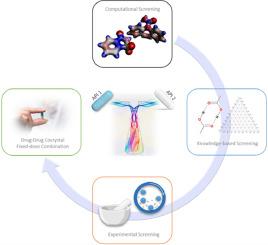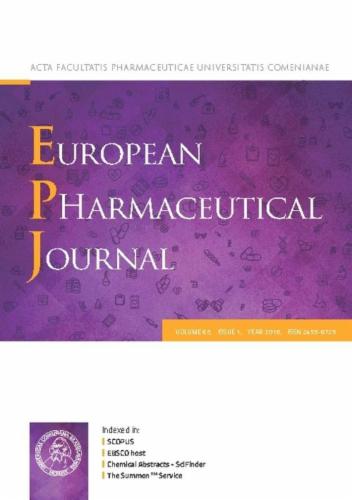Evaluating experimental, knowledge-based and computational cocrystal screening methods to advance drug-drug cocrystal fixed-dose combination development
IF 4.3
3区 医学
Q1 PHARMACOLOGY & PHARMACY
引用次数: 0
Abstract
Fixed-dose combinations (FDCs) offer significant advantages to patients and the pharmaceutical industry alike through improved dissolution profiles, synergistic effects and extended patent lifetimes. Identifying whether two active pharmaceutical ingredients have the potential to form a drug-drug cocrystal (DDC) or interact is an essential step in determining the most suitable type of FDC to formulate. The lack of coherent strategies to determine if two active pharmaceutical ingredients that can be co-administered can form a cocrystal, has significantly impacted DDC commercialisation. This review aims to accelerate the development of FDCs and DDCs by evaluating existing experimental, knowledge-based and computational cocrystal screening methods; the background of their development, their application in screening for cocrystals and DDCs, and their limitations are discussed. The evaluation provided in this review will act as a guide for selecting suitable screening methods to accelerate FDC development.

评估实验、基于知识和计算的结晶筛选方法,推动药物-药物结晶固定剂量复方制剂的开发。
固定剂量复方制剂(FDC)通过改善溶出度、协同效应和延长专利期,为患者和制药业带来了显著优势。确定两种活性药物成分是否有可能形成药物-药物共晶体(DDC)或发生相互作用,是确定最适合配制的 FDC 类型的关键步骤。由于缺乏一致的策略来确定两种可共同给药的活性药物成分是否能形成共晶体,这严重影响了 DDC 的商业化。本综述旨在通过评估现有的实验、基于知识和计算的共晶体筛选方法来加速 FDC 和 DDC 的开发;讨论了这些方法的开发背景、在共晶体和 DDC 筛选中的应用及其局限性。本综述提供的评估将为选择合适的筛选方法提供指导,以加速 FDC 的开发。
本文章由计算机程序翻译,如有差异,请以英文原文为准。
求助全文
约1分钟内获得全文
求助全文
来源期刊
CiteScore
9.60
自引率
2.20%
发文量
248
审稿时长
50 days
期刊介绍:
The journal publishes research articles, review articles and scientific commentaries on all aspects of the pharmaceutical sciences with emphasis on conceptual novelty and scientific quality. The Editors welcome articles in this multidisciplinary field, with a focus on topics relevant for drug discovery and development.
More specifically, the Journal publishes reports on medicinal chemistry, pharmacology, drug absorption and metabolism, pharmacokinetics and pharmacodynamics, pharmaceutical and biomedical analysis, drug delivery (including gene delivery), drug targeting, pharmaceutical technology, pharmaceutical biotechnology and clinical drug evaluation. The journal will typically not give priority to manuscripts focusing primarily on organic synthesis, natural products, adaptation of analytical approaches, or discussions pertaining to drug policy making.
Scientific commentaries and review articles are generally by invitation only or by consent of the Editors. Proceedings of scientific meetings may be published as special issues or supplements to the Journal.

 求助内容:
求助内容: 应助结果提醒方式:
应助结果提醒方式:


